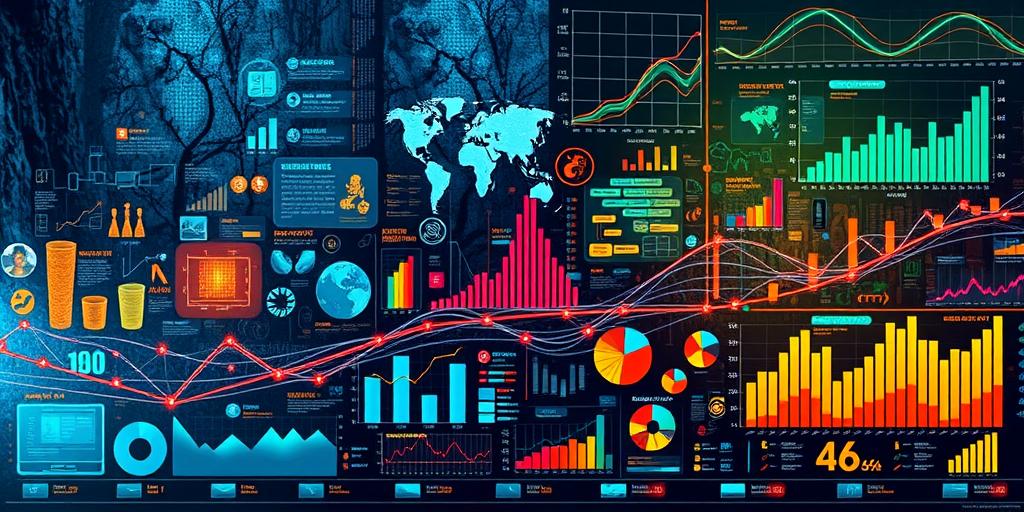Ever wondered how we went from deciphering hieroglyphs to interactive dashboards? Prepare to be amazed by the incredible journey of data visualization! This isn’t just some dry history lesson; we’re diving into the captivating story of how humans have learned to see patterns in the chaos of numbers, transforming raw data into powerful narratives. From ancient cave paintings to the sophisticated tools we have today, this is the epic saga of making data meaningful!
The Dawn of Data Visualization: Early Forms and Methods
Before charts and graphs, even before writing, humans used visual representations to communicate information. Think of ancient cave paintings depicting hunting scenes – these are early forms of data visualization, communicating important data about hunting success, animal populations, and seasonal changes. These weren’t sophisticated in the modern sense, but they served as fundamental visual representations of data. Early civilizations also employed visual aids like tally marks and pictograms on clay tablets, ancient scrolls, and even cave walls to record harvests, populations, and economic transactions. These primitive methods laid the foundation for the sophisticated techniques we have today. Think about how early civilizations used these rudimentary forms to track events, and how those basic systems evolved. These methods, while seemingly basic, represent the very genesis of our quest to understand data visually.
From Pictograms to Charts: A Gradual Evolution
As civilizations progressed, so did their methods of data visualization. The development of writing systems allowed for more complex representations of data. Ancient Egyptians used hieroglyphs to record census data, creating early versions of bar charts and pie charts, albeit without the mathematical precision we see in today’s modern charts. The Greeks and Romans built upon these foundations, employing various visual techniques in their administrative records and scientific observations. Understanding how these early attempts paved the way for future innovations highlights the iterative nature of data visualization development.
The Rise of Modern Data Visualization: Charts and Graphs Take Center Stage
The 17th and 18th centuries saw a significant leap forward in data visualization with the introduction of more structured and mathematically grounded representations. The invention of Cartesian coordinates by René Descartes revolutionized the way data was presented. Suddenly, data could be plotted on a two-dimensional plane, allowing for a more precise and accurate representation of relationships between variables. This led to the development of line charts, scatter plots, and bar charts, which are still widely used today. The invention of the printing press played a pivotal role in the dissemination of these new visualization techniques.
The Impact of Statistics and Scientific Advancements
The field of statistics, rapidly developing during this period, further fueled the growth of data visualization. Scientists needed effective ways to present and interpret their findings, and data visualization provided the perfect tool. Think about scientists presenting their findings on data visualization methodologies to other scientists. The development of new statistical methods, in turn, led to the creation of new visualization techniques – a mutually beneficial feedback loop that continues to this day. The increasing complexity of scientific data required increasingly sophisticated methods of visualization.
The Digital Revolution and the Rise of Interactive Dashboards
The advent of computers and the internet has completely transformed the landscape of data visualization. Suddenly, static charts and graphs could be transformed into dynamic and interactive dashboards capable of handling massive datasets and offering unprecedented levels of insight. This transformation ushered in a new era of data exploration and analysis. Interactive data visualization has become increasingly sophisticated over time. We are now able to use complex tools to interact with and interpret large datasets efficiently.
From Static to Dynamic: The Power of Interactivity
Interactive dashboards allow users to explore data in ways that were previously impossible. They can zoom in on specific details, filter data based on various criteria, and view data from multiple perspectives. This ability to dynamically interact with data allows for a deeper understanding and more effective communication of insights. The dynamic nature of dashboards allows for real-time updates, providing immediate feedback and improving decision-making processes significantly. This ability to instantly analyze and react is a fundamental advancement in data visualization.
The Future of Data Visualization: AI and Beyond
The future of data visualization is bright, with advancements in artificial intelligence (AI) poised to revolutionize the field even further. AI-powered tools can automate the creation of visualizations, identify patterns and trends in data, and create more effective ways to communicate insights. The next generation of visualization tools will likely combine AI with augmented reality and virtual reality to provide even more immersive and engaging data experiences. These developments present exciting opportunities for improved data understanding and knowledge dissemination.
AI and the Future of Data Insights
AI-powered visualization tools will not only improve the efficiency of creating visualizations but also their effectiveness in communicating complex information. AI could automatically generate visualizations optimized for different audiences and purposes. This will democratize data analysis by allowing individuals without specialized skills to easily interpret and act upon data. These new developments promise to transform the very landscape of how we interpret information. Think about the implications of this advanced technology. What can we expect in the future of data visualization?
Want to learn more about the fascinating world of data visualization? Subscribe to our newsletter for the latest insights and trends!




